Having spent my formative years crawling along the rivers, lakes and ponds of East Texas, I now find myself oddly homesick for the dense, piney woods that shroud the fishy waters and bug- and snake-infested swamps that bump up along the Louisiana border.
Most of the exploration we did as kids was illicit — only 2 percent of Texas’ giant land mass is publicly accessible (legally, anyway), and virtually none of that was within a bike ride of my parents’ house in Longview. When U.S. Senator Ted Cruz claimed during the 2016 presidential campaign, in his infinite wisdom, that this is how Texans like it — he righteously declared that the 2 percent of the public lands in Texas owned and managed by the feds is “2 percent too much.”
We didn’t have readily accessible national forests, national wildlife refuges or vast swaths of Bureau of Land Management acreage. We had secret paths into the privately owned woods off of old dirt roads, sketchy railroad trestles across slow, muddy rivers and old farm ponds hidden from view by tall pines and post oaks.
But, farther south, there are national forests in East Texas. There’s the Angelina National Forest situated between Nacogdoches and Lufkin; there’s the Davey Crockett National Forest between Lufkin and Crockett and there’s the Sam Houston National Forest farther south, just north of Houston. You might think these small swaths of public lands are largely gentrified — and in some instances, you’d be correct. But these open-to-everyone (even you, Ted) landscapes still boast some of the last, best wild lands left in East Texas and, honestly, some pretty lonesome backcountry fishing opportunities.
In his book, “Fly Fishing the Sam,” Houston angler Robert McConnell outlines some of those farther-flung opportunities that don’t generally mesh with the usual East Texas fishing tapestry. This is big bass country, home to famous bass impoundments like Toledo Bend and Lake Sam Rayburn. This is the home of the $65,000 bass boat, the fish finder and the trolling motor. But in his concise and easy-to-navigate book about the waters of the Sam Houston National Forest, McConnell describes fishing that a lot of “creek freak” fly fishers might find a bit more to their liking.
McConnell is refreshingly honest in his writing about the smaller waters of this national forest that includes a relatively small stretch of heavily wooded real estate. All in all, the “Sam” is only 163,000 acres, proving that the old adage, “Everything is big in Texas,” is just a tall tale. The Sam is within day-trip distance of urban Houston, and while it sees a fair share of visitors — mostly hikers and a few campers, most of the fishing that happens nearby happens mostly at Lake Livingston, an impoundment of the Trinity River.
But McConnell, an oil-rig worker and a transplant from Appalachia, has stumbled upon a unique niche among Texas anglers. Certainly, Hill Country anglers are familiar with smaller waters and the pursuit of native Guadalupe bass. But East Texas anglers, even fly fishers, are clearly more tuned in to the goings on at the big bass lakes. McConnell sought out — and found — the fly fishing more familiar to him, as a rock-hopping angler who used to chase brook trout in the wilds of Pennsylvania. And he found it among the creeks, bayous and swamps of hot and sticky East Texas, where cottonmouths and copperheads are more numerous than anglers, and where precious few bother to venture with a fly rod in hand.
But why? Why chase fish that are admittedly smaller in a destination that’s certainly buggier and snakier when trophy bass can be found from the bow of a brand-new Skeeter?
“The adventure and tranquility that’s felt away from the popular lakes and the whirr of boat motors can yield some of the greatest fishing experiences an angler can have,” McConnell writes in his guidebook.
I get this. And I know a lot of fly fishers get this, too. But let’s be honest, it’s one thing, as an avid backcountry fly fisher who pursues trout in cold, clear water, to prefer “creekin’” to casting from a boat. It's a completely different proposition to choose to wander a lonely path into the deep woods of the South in hopes of finding sunfish, bass and catfish while wading a stream with virtually no water clarity (and no idea what lies beneath).
We have bears and the occasionally surly moose here in the Rockies — both of which, with the appropriate precautions, can be easily avoided. McConnell’s book is replete with photos of froggy water and poisonous snakes. And then, of course, there are bugs and spiders and all sorts of creepy crawlies that might give the average small-stream angler pause before dipping a toe in the water.
But McConnell’s message? Don’t let it freak you out. Focus instead on the fundamentals of small-stream angling. Bring along the 3-weight, wear a good pair of boots and boldly go where virtually no other fly fishers go.
The rewards? Some of the prettiest sunfish and native spotted and white bass you’ll see anywhere. These fish don’t see many flies (or lures for that matter), and they’re eager and healthy and strong. And McConnell gives you everything you need to know to start discovering them on your own, from GPS waypoints, to trailhead locations, to what to expect when you do finally get to the water. His book certainly is a guidebook, but I’d almost go as far as to describe it as a handbook for small stream angling — anywhere. Yes, the wallpaper is quite a bit different than those of us more familiar with miniscule trout streams in the Rockies or along the spine of the Appalachians, but the techniques are the same. In some instances, I’d confidently declare that the rewards are greater.
McConnell freely admits that he crafted the book for the fly-fishing hungry audience in metro Houston, where it seems every long-rodder either goes the bass-boat route, or spends time in the shallows of Galveston Bay chasing spotted sea trout and redfish.
“The wilderness streams, creeks and bayous of this national forest deserve admiration, attention and respect,” he writes.
As an adopted son of East Texas, I know from experience how right he is. If you’re curious about backwoods angling, and you find yourself in southeast Texas for whatever reason, don’t forget the 3-weight rod and a pocket full of size 8 Woolly Buggers. And don’t forget McConnell’s book. There are fish to be caught, and chances are, you’ll be catching them by yourself.




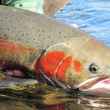
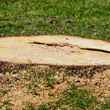
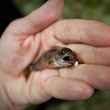
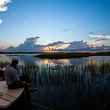



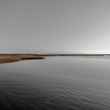
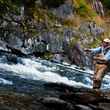



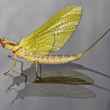




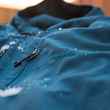
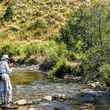



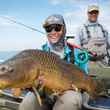
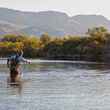
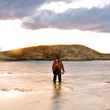
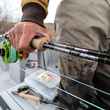
Comments